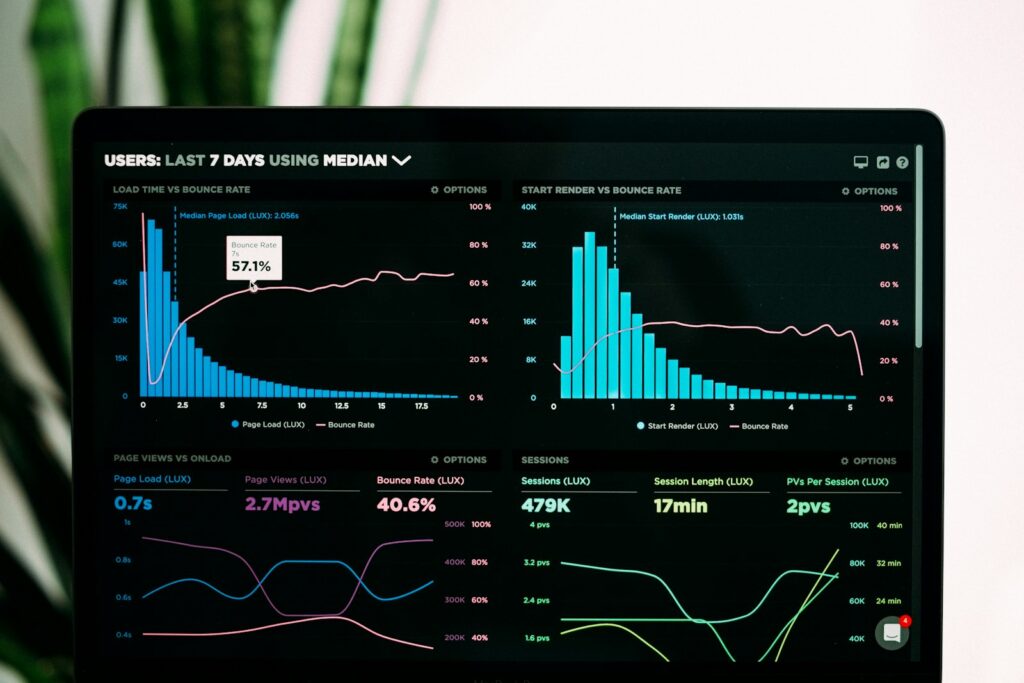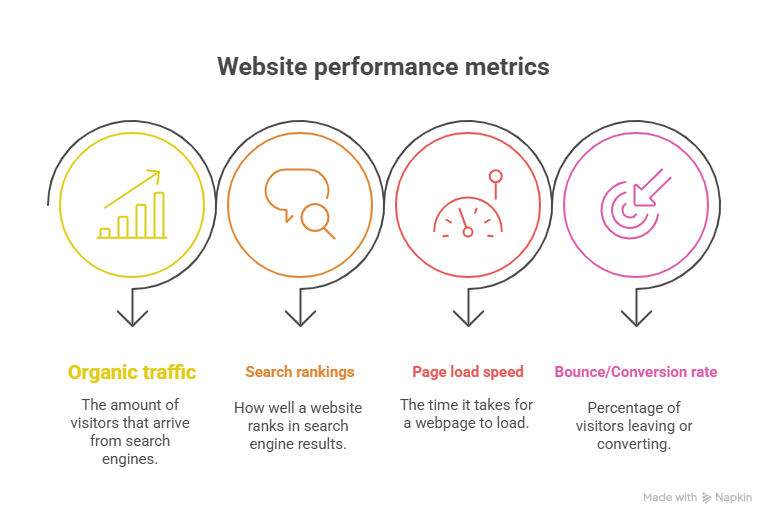In today’s fast-paced online environment, understanding the impact of your efforts is crucial. A staggering 75% of businesses struggle to measure the effectiveness of their campaigns, often due to a lack of clear visibility into their online marketing metrics.
A well-designed digital marketing dashboard can be the key to unlocking real results. By providing a clear and concise view of your efforts, it enables you to make data-driven decisions and elevate your strategy. This introduction sets the stage for exploring how to create effective dashboards that drive real outcomes.

Understanding the Power of Digital Marketing Dashboards
The power of digital marketing dashboards lies in their ability to provide real-time insights, enabling marketers to respond quickly to changes in the market. By leveraging digital marketing analytics, businesses can gain a deeper understanding of their marketing performance and make data-driven decisions.
Why Data Visualization Matters for Marketing Success
Data visualization is a critical component of a successful digital marketing strategy. By using data visualization tools, marketers can transform complex data into actionable insights, making it easier to identify trends and optimize campaigns. Effective data visualization enables marketers to present their findings in a clear and concise manner, facilitating better decision-making across the organization.
Key Benefits of Real-Time Performance Tracking
Real-time performance tracking offers numerous benefits, including improved responsiveness and enhanced decision-making. By monitoring their marketing performance in real-time, businesses can quickly identify areas for improvement and adjust their strategies accordingly. This enables marketers to stay ahead of the competition and maximize their return on investment (ROI).
Some key benefits of real-time performance tracking include:
- Improved campaign optimization
- Enhanced decision-making capabilities
- Increased responsiveness to market changes
Building Your Digital Marketing Dashboard
Creating an effective digital marketing dashboard starts with understanding what metrics matter most to your business goals. A well-structured dashboard helps you track performance, identify areas for improvement, and make informed decisions.
Selecting the Right Metrics for Your Goals
To build a comprehensive dashboard, you need to select metrics that align with your marketing objectives. This involves tracking various performance indicators across different channels.
Website and SEO Performance Indicators
For website and SEO performance, key metrics include:
- Organic traffic
- Search engine rankings
- Page load speed
- Bounce rate and conversion rate

Using an seo performance tracker can help you monitor these metrics effectively. It’s essential to understand how your website is performing in search engines and how users interact with your site.
| Metric | Description | Importance |
|---|---|---|
| Organic Traffic | Visitors coming from search engines | High |
| Search Engine Rankings | Position of your site in search results | High |
| Page Load Speed | Time taken for your page to load | Medium |
Social Media and Campaign Metrics
For social media and campaign performance, focus on metrics such as:
- Engagement rates (likes, shares, comments)
- Conversion rates from social media campaigns
- Click-through rates (CTR) on ads
Campaign performance monitoring is crucial for understanding the effectiveness of your marketing efforts. By tracking these metrics, you can adjust your strategies to improve results.
Choosing the Best Dashboard Tools
Once you’ve identified the right metrics, you need to choose a dashboard tool that fits your needs. This involves deciding between free and paid analytics platforms and considering integration capabilities.
Free vs. Paid Analytics Platforms
Free analytics platforms, such as Google Analytics, offer a robust set of features for tracking website performance. Paid platforms, on the other hand, provide additional features like advanced segmentation and custom reporting.
Integration Capabilities
When selecting a dashboard tool, consider its ability to integrate with other marketing tools and platforms. Seamless integration can enhance your ability to track performance across different channels.
| Feature | Free Platforms | Paid Platforms |
|---|---|---|
| Basic Analytics | Available | Available |
| Advanced Segmentation | Limited | Available |
| Custom Reporting | Limited | Available |
Designing Dashboards That Drive Action
To drive action, your digital marketing dashboard must be both informative and intuitive. A well-designed social media analytics dashboard can help you track your performance across various social media platforms, while digital marketing reporting tools enable you to make data-driven decisions.
Data Visualization Best Practices
Effective data visualization is crucial for making your dashboard user-friendly. Use clear and concise labels, and avoid cluttering your dashboard with too much information. Keep your visualizations simple and focused on key metrics.
Creating Role-Specific Views
Different stakeholders have different needs when it comes to dashboard information. Creating role-specific views can help ensure that each team member has access to the data they need.
Executive-Level Dashboards
Executive-level dashboards should provide high-level insights into overall marketing performance. These dashboards should focus on key performance indicators (KPIs) that matter most to executives.
Tactical Team Dashboards
Tactical team dashboards, on the other hand, should provide detailed information that team members need to execute their daily tasks. These dashboards should be tailored to the specific needs of each team.
Setting Up Automated Alerts and Reports
Automated alerts and reports can help keep your team informed and on track. By setting up automated reports, you can ensure that stakeholders receive timely updates on key metrics.
Conclusion: From Data to Decisions
A well-designed digital marketing dashboard is crucial for turning data into actionable decisions. By understanding its power, building it to meet specific needs, and designing it to drive action, marketers can elevate their strategies and achieve real results.
The key to success lies in selecting the right metrics, choosing the best dashboard tools, and creating role-specific views. With automated alerts and reports, marketers can stay on top of their performance and make data-driven decisions.
By leveraging a digital marketing dashboard, businesses can optimize their marketing efforts, improve ROI, and drive growth. As the marketing landscape continues to evolve, having a robust digital marketing dashboard will remain essential for staying competitive.
FAQ
What is a digital marketing dashboard, and how can it help my business?
A digital marketing dashboard is a visual representation of your online marketing metrics, providing a clear and concise view of your marketing efforts. It can help your business by enabling data-driven decisions, improving campaign performance, and enhancing overall marketing strategy.
What are the key benefits of using a digital marketing analytics tool?
The key benefits of using a digital marketing analytics tool include gaining insights into your website traffic, tracking your SEO performance, and measuring the success of your online campaigns. This information can help you optimize your marketing strategy and improve your return on investment (ROI).
How do I choose the right metrics for my digital marketing dashboard?
To choose the right metrics for your digital marketing dashboard, you should consider your business goals and objectives. For example, if you’re focused on improving your website’s search engine ranking, you may want to track metrics such as keyword rankings, organic traffic, and backlinks. If you’re running a social media campaign, you may want to track engagement metrics such as likes, shares, and comments.
What are some popular data visualization tools for digital marketing?
Some popular data visualization tools for digital marketing include Google Data Studio, Tableau, and Power BI. These tools enable you to create interactive and dynamic dashboards that provide a clear and concise view of your marketing metrics.
How can I use my digital marketing dashboard to improve my SEO performance?
You can use your digital marketing dashboard to improve your SEO performance by tracking key metrics such as keyword rankings, organic traffic, and backlinks. By monitoring these metrics, you can identify areas for improvement and adjust your SEO strategy accordingly. Additionally, you can use your dashboard to track the success of your SEO campaigns and measure the impact on your website’s search engine ranking.
Can I integrate my digital marketing dashboard with other marketing tools?
Yes, many digital marketing dashboard tools offer integration capabilities with other marketing tools, such as social media management platforms, email marketing software, and CRM systems. This enables you to connect your data from multiple sources and gain a more comprehensive view of your marketing efforts.
How often should I review my digital marketing dashboard?
You should review your digital marketing dashboard regularly, ideally on a weekly or monthly basis, to stay up-to-date on your marketing performance and make data-driven decisions. The frequency of review will depend on your business needs and the specific metrics you’re tracking.

